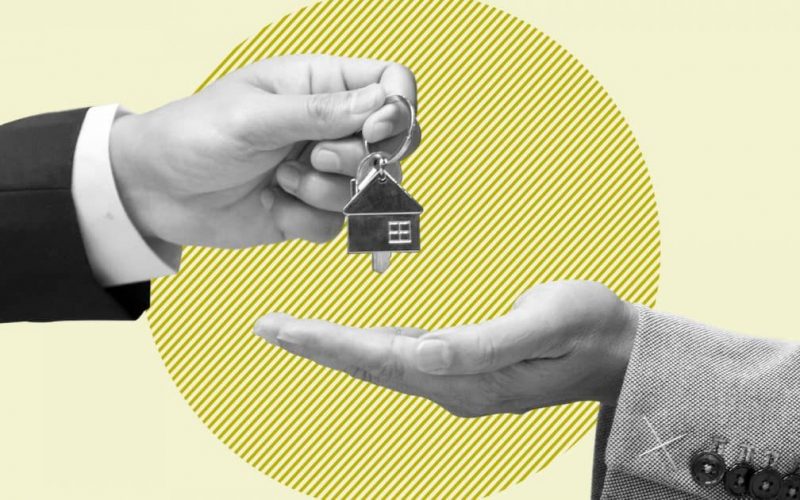Purchasing a home is one of the most exciting things you will ever do. It is also the most expensive. You’ll need a mortgage to help finance the purchase of a property unless you have a swimming pool full of cash.
Applying for a mortgage can be nerve-racking, especially if it’s your first time. The good news is that by following these steps, you may set yourself up for success.
How To Get a Mortgage In 10 Steps
Step #1: Improve your credit.
A high credit score shows mortgage lenders that you can manage your debt properly. If you have strong or exceptional credit, you are more likely to get approved for a mortgage with a competitive interest rate. If your credit score is low, you may still be able to secure a loan, but you will most certainly pay more in interest.
Use the following tips to enhance your credit before applying for a mortgage:
- Make all of your payments on schedule and work to lower your credit card balances. Your payment history on your report runs back two years or more, so begin as soon as possible.
- If feasible, bring any past-due accounts current.
- AnnualCreditReport.com provides free credit reports. Check your credit reports for mistakes and notify the reporting bureau immediately if you find any. An example of an error would be a paid-off loan that has not been documented as such, or an erroneous address.
- Before applying for a mortgage, you should check your credit score (which is generally available for free from your credit card or bank). When you analyze your score, you’ll find a summary of the major factors influencing it. This might help you figure out what modifications to make to get your credit in shape, if any.
Step #2: Determine your financial capabilities.
It’s fun to fantasize about a dream home with every conceivable bell and whistle, but it’s far more sensible to buy only what you can afford. Monthly payments will be greater as interest rates rise, so you may need to reduce your budget to find an affordable house.
Calculating your debt-to-income ratio is one method for determining how much you can afford (DTI). This is calculated by adding together all of your monthly loan payments and dividing the total by your gross monthly income.
Even if you meet the 45 percent requirement, the lower your DTI ratio, the more room you’ll have in your budget for non-home costs. As a result, many financial gurus advise keeping the ratio as close to 36 percent as possible.
Step #3: Start saving.
Your initial goal should be to save for a down payment.
It’s also critical to stock up on reserves. Even after you pay the down payment, one common rule of thumb is to keep the equivalent of six months’ worth of mortgage payments in a savings account. This can assist protect you if you lose your work or anything else unforeseen happens.
Don’t forget about closing costs, which are the fees you’ll pay to complete the mortgage. They typically range between 2% and 5% of the loan’s principal. They also do not include escrow payments, which are a distinct expense. In general, annual maintenance and repair costs should be roughly 3% of the home’s price.
Overall, save as much as you can until you attain your desired down payment and reserve savings goals.
Step #4: Select the best mortgage.
Once your credit score and savings are acceptable, begin looking for the best type of mortgage for your scenario. You’ll also want to understand how mortgages work before proceeding.
Mortgages are classified into three types:
- Conventional loans: They are best for homebuyers with good credit and a sizable down payment. They are accessible at the majority of banks and through a number of independent mortgage lenders.
- Government-backed loans (FHA, VA, or USDA): These can be excellent options for borrowers who do not qualify for a conventional loan or who meet certain qualifications, such as military service for a VA loan.
- Jumbo Loans: Jumbo loans are available for more expensive properties. A conforming loan has a maximum permissible value, and if you need to finance more than that ($647,200 in most areas of the country or $970,800 in more affluent areas), you’ll need to secure a jumbo loan.
For example, a first-time homebuyer might select an FHA loan, which needs a minimum credit score of 500 with a 10% down payment or a minimum credit score of 580 with as little as 3.5 percent down. For a borrower with a higher credit score and larger down payment savings, a conventional loan may be a better choice.
Mortgages can be fixed or adjustable rate, which means the interest rate remains constant for the life of the loan term or changes over time. Most house loans have 15- or 30-year durations, but 10-, 20-, 25-, and even 40-year mortgages are available.
Adjustable-rate loans may have a lower monthly payment at first, but they might become more expensive over time as interest rates climb. Given today’s rising interest rates, your payment is likely to rise after your rate-lock period expires. If you can’t take the risk, a fixed-rate mortgage is the way to go.
Step #5: Locate a mortgage lender.
It’s time to select a mortgage lender once you’ve settled on the type of mortgage. It’s critical to compare various offers to ensure you’re getting the best bargain available, not just the lowest interest rate. When weighing your options, keep the loan costs in mind.
Keep in mind that interest rates, fees, and periods might vary greatly amongst lenders.
For many consumers, applying for a mortgage is a daunting task. If you’re not sure what to look for, you might want to seek assistance. A mortgage broker may assist you in navigating the various loan alternatives available to you and may be able to achieve more favorable terms than you would be able to secure by applying on your own.
Step #6: Obtain a loan preapproval.
Once you’ve identified a suitable lender, it’s a good idea to get preapproved for a mortgage. With a preapproval, the lender will look through your finances to see if you’re qualified for funding and how much they’re willing to grant you.
Keep in mind that mortgage preapproval is not the same as prequalification. A mortgage preapproval requires far more proof than a prequalification, which is just a means for a lender to tell you that you’d be a good applicant. However, it does not guarantee any specific loan terms.
Step #7: Start looking for a home.
With a preapproval letter in hand, you may begin really looking for a house that fulfills your requirements. Take the time to look for and select a property in which you can see yourself living.
When you locate the perfect combination of affordability and livability, be ready to act swiftly. You’ll need to be aggressive in a competitive market where available properties sell quickly and bidding wars are prevalent.
Step #8: Fill out your loan application.
If you’ve located a home you want to buy, you’re ready to submit a mortgage application. Most applications may now be completed online, although it can sometimes be more efficient to apply in person or over the phone with a loan officer. You may be able to create a better relationship with the loan officer in person, which can be beneficial if you have concerns or issues arise along the process.
In order to check your creditworthiness, the lender will also obtain your credit record.
Step #9: Wait for the underwriting process to complete.
Even if you’ve been preapproved for a loan, that doesn’t guarantee you’ll acquire financing from the lender. The ultimate decision will be made by the lender’s underwriting department, which examines the risk of each potential borrower and determines the loan amount, loan rate, and other factors.
The underwriting process consists of several steps:
- To begin with, a loan processor will validate the information you supplied throughout the application process.
- When you make an offer on a home, the lender will request an appraisal to determine whether the sum you offer is reasonable. The appraised value is determined by a variety of variables, including the home’s condition and comparable properties in the neighborhood, or “comps.”
- To ensure that the property may be transferred, a title business will conduct a title search, and a title insurer will issue an insurance policy that guarantees the accuracy of this investigation.
- Finally, the underwriter will make a decision: approved, authorized with conditions, suspended (indicating further evidence is required), or denied.
Step #10: Complete the purchase of your new house.
You’re almost there if you’ve been officially authorized for a mortgage. At that time, all that remains is to finish the closing.
The following are typical closing costs:
- Fee for appraisal
- Fee for a credit check
- Fee for origination and/or underwriting.
- Fees for title insurance and services
- Prepaid
- Lawyer’s fees
- Fees for recording
At the closing, you will examine and sign a slew of paperwork, including information on how monies will be distributed. The closing or settlement agency will also make the transaction public.
What Qualities Do Mortgage Lenders Look For?
When you apply for a mortgage, lenders consider a number of criteria in order to determine your ability to repay the loan. Your income and job history, credit score, debt-to-income ratio, assets, and the type of home you want to buy are all important factors.
#1. Income and Work Experience
When you apply for a loan, one of the first things mortgage lenders look at is your income. There is no predetermined cash amount that you must earn each year in order to purchase a home. However, your mortgage lender would want to know that you have a consistent cash flow to repay your loan.
Your lender will look at your employment history, monthly household income, and any additional sources of income you have, such as child support or alimony payments.
#2. Credit Rating
Your credit score has a significant impact on your ability to obtain a mortgage. A high credit score indicates to lenders that you complete your payments on time and do not have a history of borrowing excessively. A poor credit score makes you a riskier borrower since it indicates to lenders that you may have a history of financial mismanagement.
A standard loan typically requires a credit score of 620. A credit score of at least 580 is required for a government-backed loan, but this can vary depending on the loan.
A higher credit score might provide you with additional lender options as well as reduced interest rates. If your credit score is low, it’s a good idea to work on improving it for a few months before applying for a loan.
#3. Debt-to-Income Calculation (DTI)
Your debt-to-income ratio, like your income and credit score, is a powerful indicator used by lenders to determine if you have the necessary cash flow to qualify for a mortgage.
The total of all your minimum monthly debt payments is divided by your gross monthly income to calculate your DTI. Credit card statements, student loans, and auto loans are examples of regular debts that must be factored into your DTI. When computing DTI, expenses such as food or a Netflix subscription might be excluded.
The DTI a lender is looking for varies depending on the sort of mortgage you’re asking for. A DTI of 50% or less is typically the baseline for a traditional mortgage. However, many government-backed loans will have higher thresholds.
#4. Assets
When you apply for a loan, lenders want to know that you have some spare money in the bank. This guarantees the lender that you will be able to make your payments even if you run into financial difficulties. Your lender will request a review of your assets. This can include any form of account from which you can withdraw funds.
The following are some instances of assets:
- Accounts for saving
- Accounts for retirement
- Investments that are deductible
- Property Classification
Because different types of property impact the level of risk for your lender, the sort of loan you can acquire is affected by the type of property you buy.
Do you want to acquire a tiny single-family home to live in as your primary residence? You’ll probably get better terms because lenders understand that primary housing bills are already a part of most people’s budgets, and you’ll be more likely to keep up with your payments.
If the owner experiences financial difficulty, investment properties will take a back seat to personal residences. To mitigate the risk, lenders will almost certainly want a greater down payment and a higher credit score to qualify for an investment property mortgage.
The interest rate and buyer requirements differ depending on the sort of property you are looking for. Remember that not every lender will finance every type of property (mobile, manufactured, commercial, etc.).
What Documents Will I Need To Apply For A Mortgage?
Prepare all of your papers before applying for a loan to expedite the procedure. Let’s go over the documents you’ll typically require when applying for a mortgage.
- Income Documentation
- Your lender will want several pieces of documentation to prove your income. You may be required to produce the following documents:
- At least two years’ worth of federal tax returns
- W-2s and pay stubs from the last two years
- If you’re self-employed, you’ll need 1099 papers or profit and loss statements.
Divorce decrees, child support orders, and any other legal papers confirming that you will continue to receive payments for at least another three years
If relevant, legal evidence demonstrating that you have been receiving alimony, child support, or other types of income for at least 6 months.
Documentation of Credit
Your lender will want verbal or written authorization to view your credit report. They’ll look at your credit history and check for unfavorable issues (such as a bankruptcy or foreclosure) that might make getting a loan harder.
If you had an extenuating event that harmed your credit, explain it to your lender and offer documentation. For example, if you missed a few credit card payments due to a medical emergency, you should provide a copy of your medical bills to your lender. This demonstrates to your lender that the bad scores on your report were the consequence of a single incident rather than a pattern.
Evidence of Assets and Liabilities
When verifying your assets, your lender may want some or all of the following:
- Account statements for up to 60 days that validate the assets in your checking and savings accounts
- Your most recent retirement or investment account statement
- Documentation for the sale of any assets you sold before applying, such as a copy of the title transfer if you sold a car.
- Proof of any donation cash deposited into your account during the last two months
Your lender may also request more information on any debts you owe, such as a student loan or an auto loan. Cooperation with your lender only facilitates the procedure, so give any needed information as soon as feasible.
How Much Money Must You Make to Be Eligible for a Mortgage?
There is no set minimum income for obtaining a mortgage. However, lenders consider other factors in addition to pay. Borrowers must also meet minimal credit score standards and down payment requirements. A lender will take into account all aspects of your financial situation to ensure that you can afford the home you wish to purchase comfortably.
Is a Second Income Required to Obtain a Mortgage?
If there is only one income in your home, you can still get a mortgage. The quantity of your revenues is irrelevant if the lender is confident in your ability to make payments over the duration of the loan.
How Do Banks Confirm Income When Lending Money?
Mortgage lenders typically check a borrower’s employment by getting in touch with their company directly and looking over recent income records. An employment verification letter, a recent pay stub, or any other proof of employment history or income confirmation might be included in these documents.
Is a Mortgage Dependent on Income or a Salary?
The loan-to-income ratio, which is calculated by dividing the amount you wish to borrow by your income, is used by mortgage lenders as a basis for decision-making.
What Factors Most Influence Mortgage Approval?
Your credit score, debt-to-income ratio, and loan-to-value ratio are the three main factors that determine whether a lender will approve your application for a mortgage and how much it will cost you.
Conclusion
When you apply for a mortgage, lenders consider a variety of variables. They will look at your income, job history, credit score, debt-to-income ratio, assets, and the type of property you wish to purchase. You will be responsible for presenting them with all appropriate papers that can demonstrate your eligibility for a loan.
The first step toward obtaining a mortgage is to apply for pre-approval. Preapproval offers you an indication of the loan principal you can obtain, making it easier to browse for properties that fit within your budget. Once you’ve been preapproved, you can begin examining homes and possibly enlisting the assistance of a real estate agent.
Once you’ve found the perfect property, your agent can assist you in making an offer on it. Also, once the seller accepts your offer, you must obtain full lender approval. Underwriting and an appraisal are also included in full approvals. You’ll attend a closing meeting, sign the closing documents, and make your down payment and closing costs once you’ve been accepted.
- REQUIREMENTS TO BUY A HOUSE: A Step-By-Step Guide
- How To Buy A House With Bad Credit: Detailed Guide In 2023
- Secondary Mortgage Market: Step By Step Guide On How It Works
- What Credit Score Do You Need to Buy a House: Best US Practices in 2023
- PAY OFF MORTGAGE EARLY: When & How To Pay Off Mortgage Early






